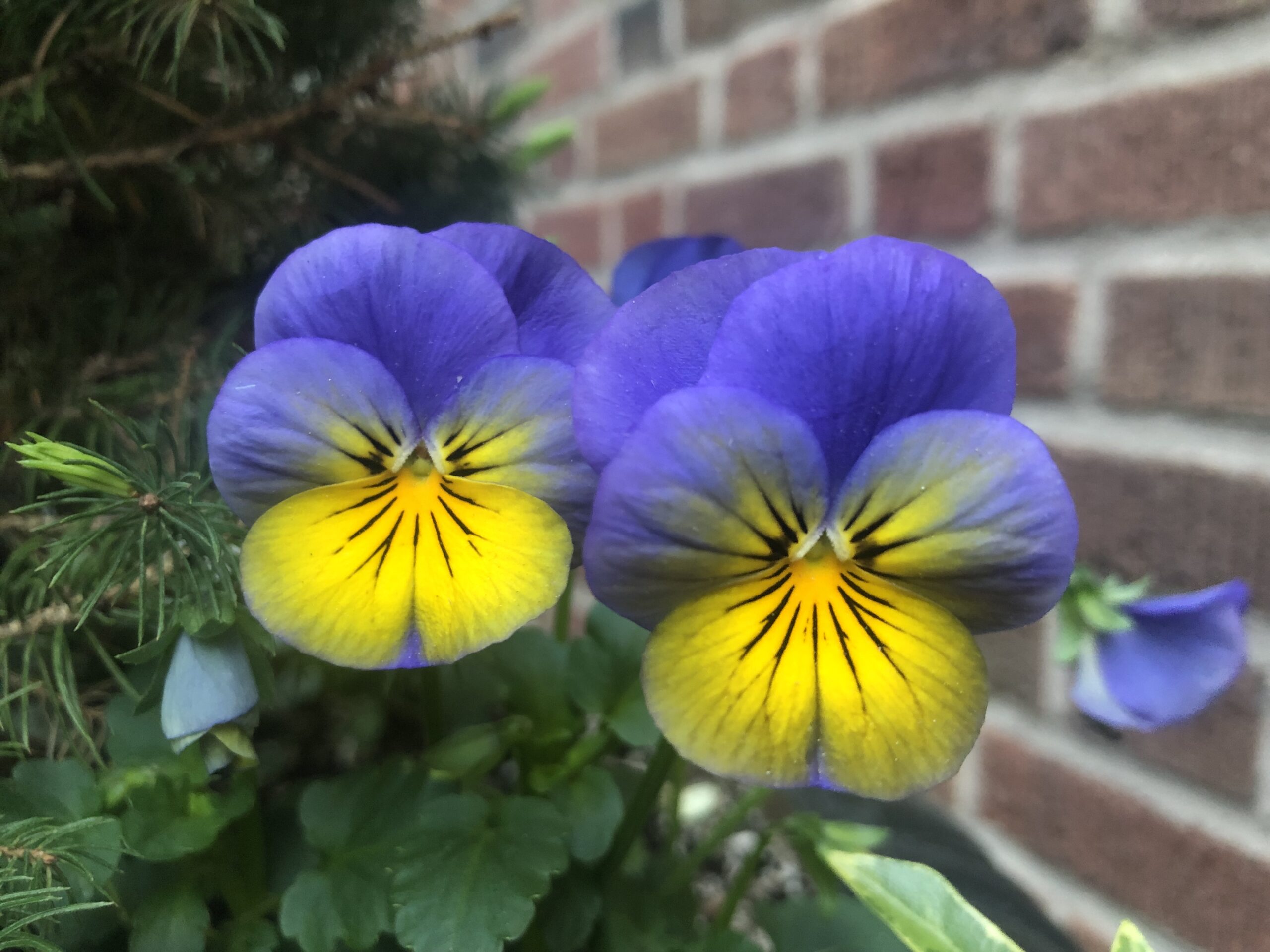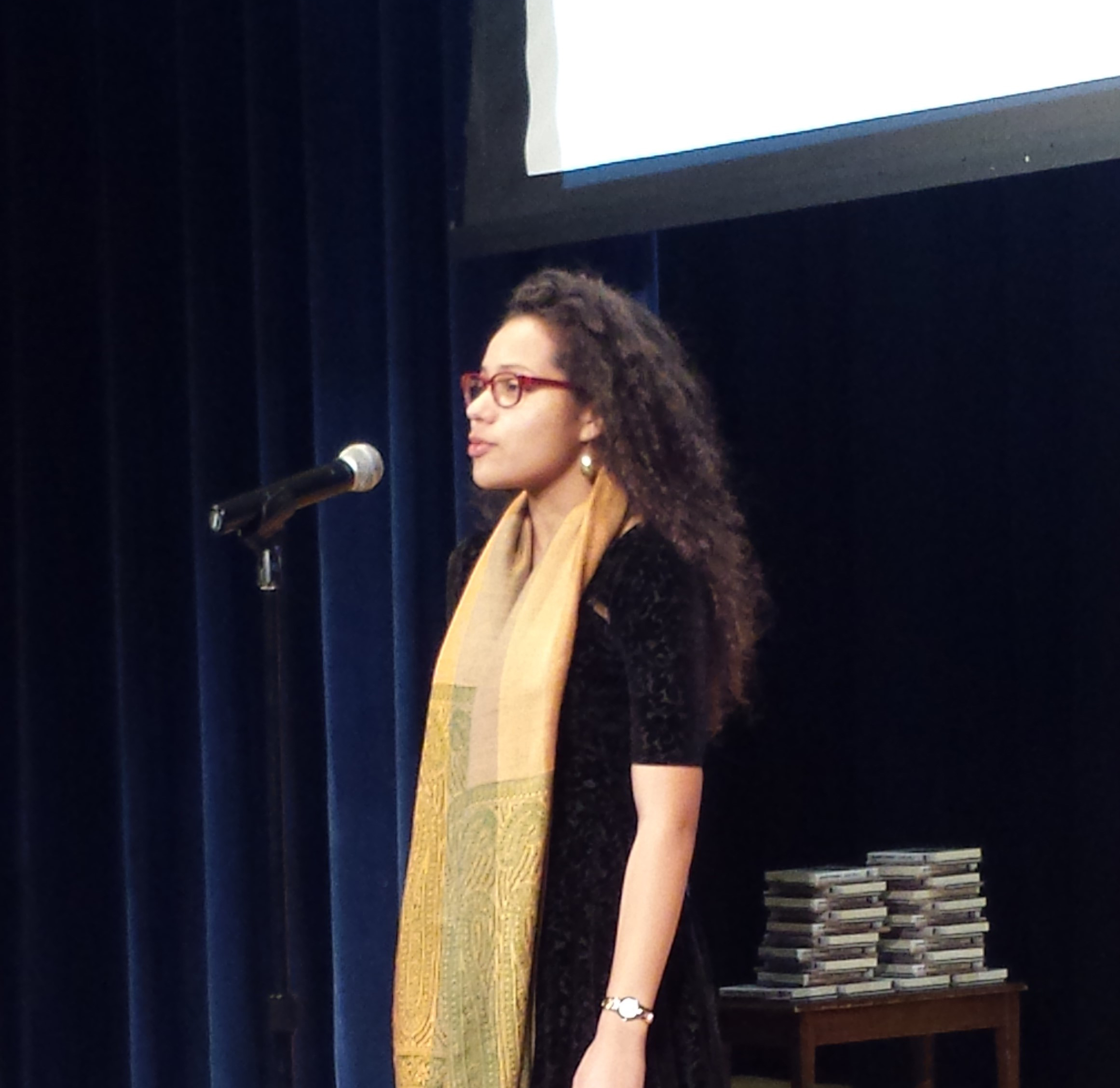This lesson is part of Writing Our Way Through: clear, fun, and engaging “lessons” for writing at home with young people.
Author/Teaching Artist: Matthew Burgess
Age Range: All Ages
Materials: Paper, pencils/pens
Overview
This lesson is inspired by E.E. Cummings’ beloved and widely anthologized poem, “[in Just-].” While this mentor text celebrates the beginning of spring in all of its let’s-get-outside mud-lusciousness, the writing activity can be adapted easily to winter, summer, or fall. If you are writing with younger kids, you can create a simple template in advance or be the scribe of a single collaborative poem that you compose together. More experienced writers often thrive with less structure and more freedom to take the poem in their own direction. (You can see some variations in the student poems below.)
E. Cummings is well-known for his rambunctious wordplay as well as his inventive use of the page. What many people don’t realize is that he was a visual artist as well who once referred to himself “an author of pictures, a draughtsman of words.” Often, I will teach this lesson as an invitation to experiment with a more intuitive or playful placement of the poem on the page.
E. Cummings is well-known for his rambunctious wordplay as well as his inventive use of the page. What many people don’t realize is that he was a visual artist as well who once referred to himself “an author of pictures, a draughtsman of words.”
The Steps:
1. Prior to beginning the activity, I suggest reading the poem to yourself once or twice to familiarize yourself with the dance of Cummings’ language. Then, when you’re ready to begin, briefly introduce E.E. Cummings as a poet who was known for his playful use of language. He was someone who liked to experiment with words and to “break the rules.”
2. Read “[in Just-]” aloud once, to get it into the air. Then you might ask for a volunteer to read it a second time. Also, hold the poem up so that participants can see the shape of the poem on the page. Just seeing the way Cummings jumps off the margin will give a kind of permission for participants to do the same.
3. Invite any observations about the poem, possibly using some of the following questions to prompt discussion: How does the speaker of the poem feel about springtime? Which words or lines stand out to you? Where does the poet play with words or break rules?
4. While you don’t need to focus on poetic devices (and you might choose not to depending on the age or attention spans of the participants), I often introduce “onomatopoeia” with this poem. Easily defined as “words that imitate sounds,” such as buzz, bam, splash, or pop, you can point to Cummings’ repetition of the word “wee” and ask: What is a person feeling if they say they say “wee”? What is the feeling that it gives you?
5. Next, point out (or invite participants to identify) two moments in the poem where E.E. Cummings creates a new word by joining two others together with a hyphen. Answer: “mud-luscious” and “puddle-wonderful.”
6. Now, a game! Take a piece of paper and fold it vertically down the middle (“hot dog style”). On the left-hand side, brainstorm together a list of “things” that you associate with spring. Just be sure that this column is full of nouns, and as a general rule when you write them down, put them in the singular form, such as: raindrop, grass, tulip, sunshine. The longer the list, the better. (Note: you can substitute any other season here with great results, and you don’t need to write a poem about the season you are currently in!)
7. On the right-hand side, brainstorm a list of adjectives that are more or less synonymous with “wonderful.” You might get the ball rolling by writing “wonderful” and “luscious” from Cummings’ poem at the top. Allow for participants gather some momentum until they’re tossing out words like: spectacular, stupendous, terrific. Write them all down.

8. Now, ask for a volunteer to take a word from the left column and “squish it together” with a word on the right. For example, someone might offer “tulip-spectacular” or “raindrop-dope.” Repeat these new words aloud and/or write them down so that participants can feel the fun of the wordplay here. If logic overtakes some participants and they re-order these words in the usual way, such as “spectacular-tulip,” gently guide them back to the noun-adjective order, which is more exciting poetically because it is less expected.
Repeat these new words aloud and/or write them down so that participants can feel the fun of the wordplay here. If logic overtakes some participants and they re-order these words in the usual way, such as “spectacular-tulip,” gently guide them back to the noun-adjective order, which is more exciting poetically because it is less expected.
Note: some kids might take this one step further by omitting the “hyphen” and squishing these words even closer together, i.e. “tulacular” or “raindope.” Encourage this! In technical terms, this participant has turned the compound word into a “portmanteau,” such as the way “smog” is a blending of smoke and fog. You don’t need to teach these terms right now, especially if you sense that the introduction of technical sounding language might drain enthusiasm in the immediate lead-up to writing time.
9. Now we’re going to write our poems drawing from the collaborative brainstorm. You can place the list in the center of the table or hang it up nearby so that everyone can see it. The guidelines are simple, and with more experienced writers, they can be adapted or ditched altogether. Simply begin with:
It’s spring [summer, fall, winter]
when the world is…
…and then describe the season using “squished words” from the list, as demonstrated. If you see a way of incorporating onomatopoeia somewhere in your poem, terrific! You might choose to read one of the student model poems aloud, to clarify the guidelines and give an extra dash of inspiration.
10. Once participants have finished writing, you can invite volunteers to share their poems aloud. You also can distribute drawing paper and art supplies and let participants sketch, draw, or paint a scene from their poem.
Literary Terms, Forms, and Devices: Wordplay, onomatopoeia, compound words, portmanteau.
Acknowledgments / References: I created this lesson after my first children’s book, Enormous Smallness: A Story of E.E. Cummings, published in 2015. I often teach these season poems in tandem with the picture book biography. The story of young “Edward Estlin” discovering his love of language can provide additional context and inspiration for the writing activity.
Mentor Text
[in Just-]
in Just-
spring when the world is mud-
luscious the little
lame balloonmanwhistles far and wee
and eddieandbill come
running from marbles and
piracies and it’s
springwhen the world is puddle-wonderful
the queer
old balloonman whistles
far and wee
and bettyandisbel come dancingfrom hop-scotch and jump-rope and
it’s
spring
andthe
goat-footed
balloonMan whistles
–E.E. Cummings
far
and
wee
Student Poems
Spring Poem
It’s spring when the world is
tree-cool
when
the
flowersare blooming it’s
flower-terrific when
the sun is shining it’s so
sunshine-magical when I hear
the birds chirping chirpchirp
chirp it’s springwhen the universe is singing
–Aanya K., Grade 2
spring
spring
spring
and we are
playing outside, at the park,
and rolling on the hills while
shouting
wheee
Spring.
Winter
It’s winter
–Nicolas C, Grade 2
when the world is snowflake-awesome
blizzard-exciting, mitten-amazing,
ice-magnificent
wind-thrilling, ice-marvelous
icicle-terrific, hot cocoa-fantastic
snowball-enthusiastic
storm-wonderful
Christmas-fabulous,
ski-fun, snow-angel-pretty
sled-brilliant
salt-gorgeous, snowman-beautiful
jacket-extreme, snow-cone-fun
hot-coffee-best, ice-blast, fire-ball-fire-blast
snowflake-marvelous world!
Spring Poem
bud blossom
happy
COOL
create.YOU
can
DO
it.tree tulip peace FULL
per fect.A
pinch of magicis what
you need.
Flower
fruit great gorgeous
specialis
what you
are.Plant people
peaceful perfectMAGIC!!!!
grass garden
fantastic
bird
blossom
pollen
people and cooling
off is a job you need!Make the world
–Natasha U., Grade 2
yours with that
sense of humor!!!!
Matthew Burgess is an Associate Professor at Brooklyn College. He is the author of eight children's books, most recently The Red Tin Box (Chronicle) and Sylvester’s Letter (ELB). Matthew has edited an anthology of visual art and writing titled Dream Closet: Meditations on Childhood Space (Secretary Press), as well as a collection of essays titled Spellbound: The Art of Teaching Poetry (T&W). More books are forthcoming, including: As Edward Imagined: A Story of Edward Gorey (Knopf, 2024), Words With Wings & Magic Things (Tundra, 2025), and Fireworks (Harper Collins, 2024). A poet-in-residence in New York City public schools since 2001, Matthew serves as a contributing editor of Teachers & Writers Magazine.




